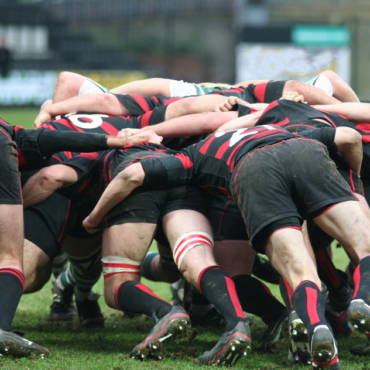There is no doubt that successful sports performance is multi-disciplinary in nature. Athletes and coaches need to be aware of the physiological, biomechanical, psychological, nutritional, medical and immunological and other issues that can impact on their competition performances.
It – performance – is rarely – if ever -about one thing in isolation!
It is when all these factors come together and work as an integrated performance system that excellence in high performance sport is possible.
Coaches are trained to think and work in a multi disciplinary environment. For example, a coach on observing an athlete training will be thinking about physiology (speed, heart rate, lactate, fatigue, effort, exertion level and so on).
At the same time however they will be thinking about technique, skill and biomechanical issues. They also may be considering attitude, motivation and personality issues – the psychology of performance.
Coaches are trained to think critically about all aspects of performance and how they interact and influence each other. Coaching is above all – about problem solving!
In contrast a sports physiologist sees the athlete in terms of blood and muscle, heart rate and lactate. A biomechanist talks of the athlete in terms of angles, speed and acceleration. A psychologist considers the athlete in terms of self confidence, motivation, attitude and arousal.
Yet in trying to achieve optimal performance, it is all these factors, and many more besides, which need to be blended together in the right mix at the right time and in the right amounts to produce a winning athlete or team. It is the effective management of the various sports science disciplines into a multi disciplinary team approach that can make all the difference.
Whilst the concept of the various disciplines of sports science working together makes sense, there are traditional and historical barriers to the multi disciplinary model which must be overcome if it is to make a real impact on sports performance.
Traditional Model of Sports Science Professional Development:
The traditional development and education pathway of sports science professionals sees the student become progressively narrower in focus over the period of their education:
- High School / College: Wide perspective (maths, science, English, history, sport, languages etc);
- Undergraduate University: The perspective narrows, perhaps Science or Human Sciences only;
- Final Year University : The perspective narrows again, physiology or exercise physiology only;
- Post Graduate University: A further narrowing, muscle physiology only;
- PhD and Postdoctoral Study: Focus on minute detail of one aspect of muscle physiology only.
At the end of ten years of study, the system has produced a person with outstanding skills and knowledge in one very specific area of the sports science industry – the single discipline specialist.
The problem here is that to the man with a hammer, every problem is a nail!
If a coach goes to a physiologist with a performance problem, the physiologist will try to solve it using physiology – the physiologist will look for the best physiological solution to the problem…not necessarily the best solution to the problem.
Contrast this with Typical High Performance Coach development pathway:
- Level One Coaching: Beginners, kids. Focus is on Fun, skills, and enjoyment;
- Level two Coaching: All of the above plus working with state level athletes. Focus is on learning to train, how to compete;
- Level three Coaching: National / international level coaches. All the above plus a focus on winning, on training, on mental skills development, on biomechanics, on nutrition, on dealing with pressure etc.
And it is at this final point, where the sports scientist’s focus is at its most narrow and the coach’s perspective is at its widest, the two are brought together either through a research project funded by an academic institution or through a national team sports program.
Is it surprising then that in many instances the two groups of professionals (coaches and sports scientists) find it difficult to effectively work together?
Also consider that it is at this point where sports science professionals from the respective disciplines are brought together in an Olympic or professional team environment and asked to contribute to the performance of the athlete or team.
Considering the development process of the sports science professionals where each discipline is relatively isolated, distinct and separate from the others, the concept of forming an effective multi disciplinary team with a common focus is a challenging task.
Add to this the traditional, political, personality and historical conflicts between disciplines and the ubiquitous “us versus them”, “silo” and “empire building” political environments which are allowed to evolve in ALL academic and sporting institutions and it is little surprise that a true integrated, multi disciplinary environment is at best difficult to foster.
There are three key issues here:
- The current education and development program for sports science professionals narrows their focus to make them experts in one area of sports science. In most cases this means becoming an expert in one aspect of one area of one discipline of sports science;
- At the same time, as the current philosophy of the national level High Performance sports systems around the world are “coach driven”, the key decision makers in the system, i.e. the coaches, are being educated to be increasingly broader and multi disciplinary in their focus. Coaches are looking for sports science professionals capable of providing them with ideas and solutions based on intelligent observation and open minded perspectives;
- High performance coaches are looking to build and manage effective sports science teams to support athletes preparing for elite level competition. The coaches demand that the sports science professionals involved in these team environments work co-operatively together under pressure with a common focus and with mutual respect and understanding of the respective disciplines. The industry needs professionals who can work in this team environment and work with – perhaps even learn from, other disciplines.
The long term commitment to sports education has in some way “backfired” for the sports science industry. We now have large numbers of high performance coaches who are quite comfortable with using heart rate monitors, reading lactate analysers, using digital video cameras, talking with athletes about nutrition and working with athletes on mental skills development.
These are skills that only a few years ago were the exclusive domain of university trained sports science professionals.
By upskilling and educating coaches over the past twenty years, the pressure is now back on the sports science industry to provide coaches with more innovative and creative ways of assisting them in their efforts to produce successful high performance athletes.
Multi Disciplinary sports science, performance science and integrated performance models are the current “buzz words” of the high performance sports industry.
However, the issue is more complex than throwing a group of professionals together and telling them to “work together” in some open plan office environment: it requires a significant commitment to thinking differently.
There are numerous obstacles in the way of developing a truly multi disciplinary approach to high performance sport: none the least being a change in the attitude of the practitioners and professionals to accept the limitations in single discipline approaches to success.
It also means opening the minds of the high performance sporting institutions who for so long have harbored and encouraged the development of the single discipline, “faculty” approach and the “over servicing by multiple departments”, approach to enhancing sports performance.
It will take a committed effort from the sports science industry to make this new paradigm work effectively and in doing so make a significant impact on the performance of high performance athletes.
The Future Possibilities:
- It all starts with the Universities and Academic system. Whilst the Academic system continues to produce single discipline sports scientists for the high performance sports industry, the traditional inter disciplinary barriers will be difficult to overcome;
- To remain industry relevant, Universities and other sports industry training professionals need to create new programs which teach Performance Science / Integrated Sports Science courses so that the next generations of sports science professionals are able to work effectively in this new paradigm;
- It is possible that a nation can lead the rest of the world in this area by breaking down these inter disciplinary rivalries and aim to produce performance scientists rather than physiologists or biomechanists or psychologists. Whilst single discipline experts and specialists are and will continue to be valuable to consult on specific issues, the current demand is for innovative sports scientists who can think with an open minded / problem solving approach to partner with coaches and athletes and help achieve their performance goals;
- Academic institutions can adapt to meet industry demands or risk struggling for relevance as the paradigm shift towards multi disciplinary sports science / performance science gathers world wide momentum;
- Academic Institutions should also consider forming long term partnerships with sporting institutions, national sporting organisations and other industry stakeholders and work together to provide the multi disciplinary focus that high performance sport needs. This should extend to providing final year under graduate or first year post graduate students with scholarship opportunities to work closely with elite sport and specifically with elite coaches;
- Coaches should be directly involved in developing research questions which performance science attempts to answer. As a result, sport benefits by being actively involved in research, the academic institutions benefit by answering research questions that have practical application and the coaches and athletes benefit through the direct practical application of current research to their training and competition programs.
Everybody wins.
Watch this blog for much more on this topic in coming months!
Wayne Goldsmith



4 Comments
Hi Wayne,
Some really good ideas here.
As someone who got a lot out of doing a PhD combining physiology and psychology, I hope more can be encouraged to do the same.
Cheers,
Michael.
Interesting article Wayne, at the AIS in the 80’s& 90’s the only research that scientists could undertake had to be performance driven. In most cases the topics were raised by the coaches and unless the Head Coach agreed to any research put forward by the “scientists” it didn’t happen. The other point I would like to make is that “science” lends itself more to some sports than others, e.g. short time individual sports compared with team sports are like chalk and cheese. Regards
Thanks guys.
The old “silo” or “faculty” model is going to be a tough one to change but if you read about what’s happening in the broader corporate world, there is a big push against single dimension, single discipline thinking all over the world.
Why can’t sport be the leader in the introduction of a new one of thinking instead of waiting to see what the corporates are doing and then copy it?
Our nature is to be innovative and lead – why can’t we – the sporting industry – be first in this area as well?
WG
I am researching on how to use a interdisciplinary approach to solve a problem of an athlete. I am using the following factors; the athlete is recovery from injury, underperformance, overtraining). The athlete is a male, 24yrs old, long jumper and a student. The athlete is also number 1 in his country but badly perform in international competition.
Regards,
Fred
Comments are closed.